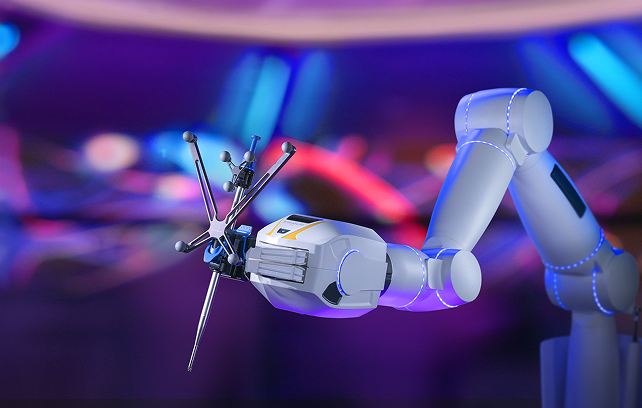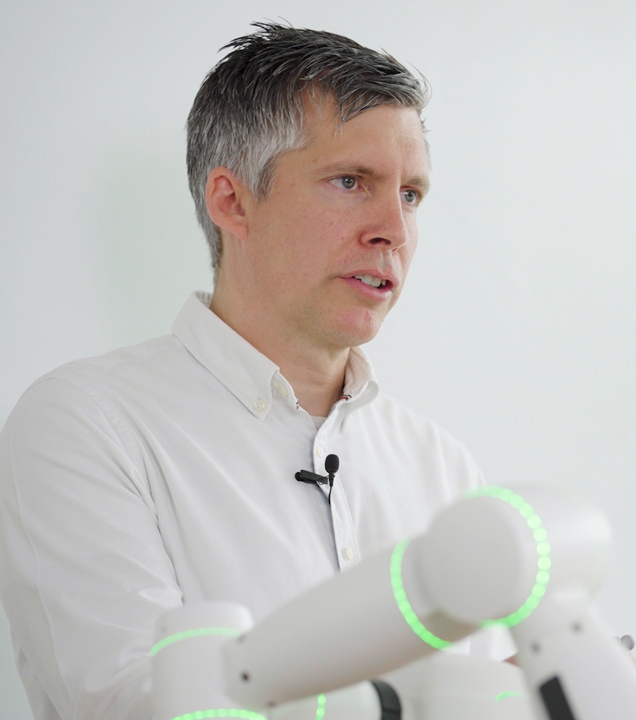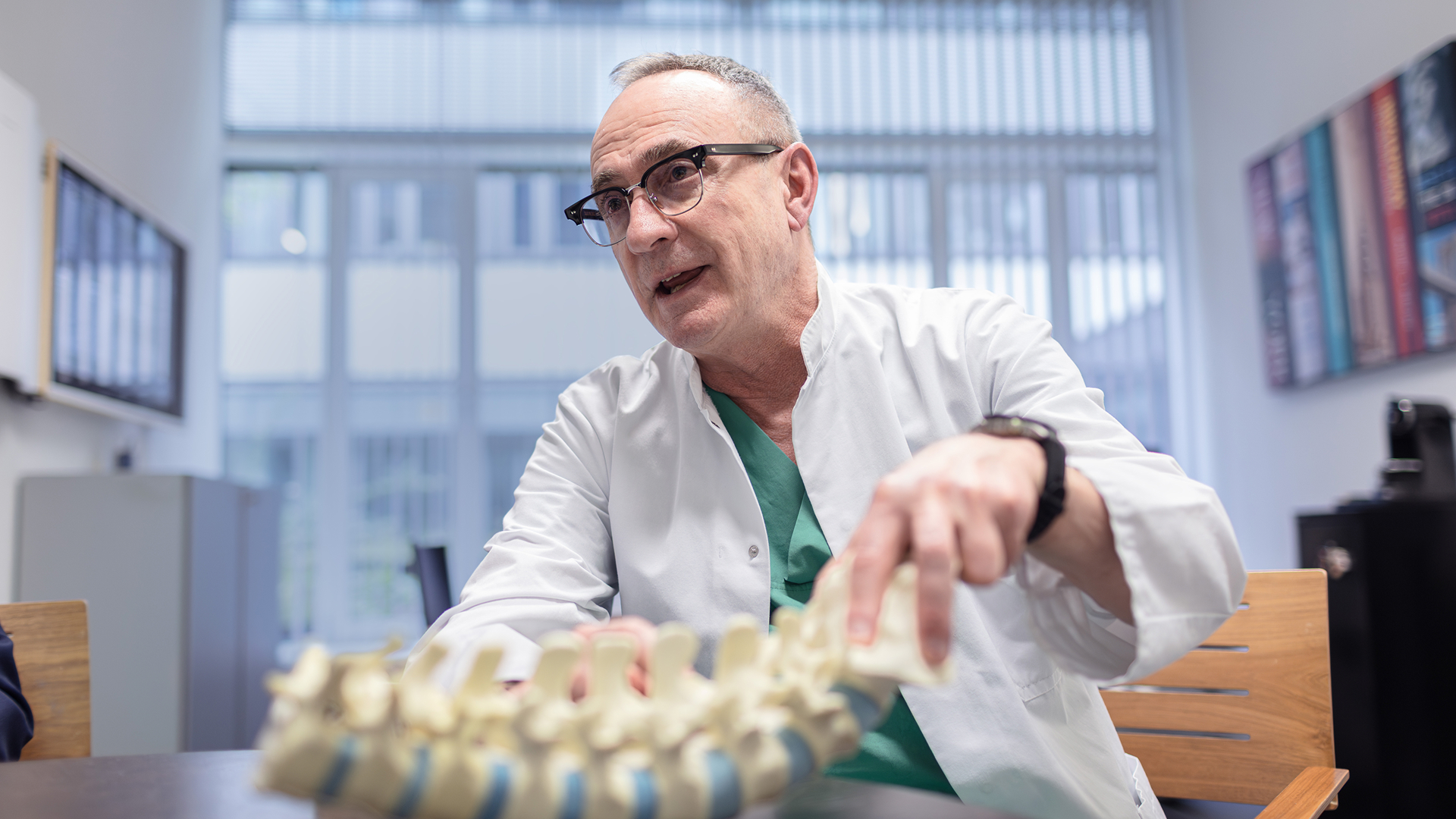“That looks exciting,” says the cameraman, pointing to a futuristic-looking object being wheeled out of the room. “But you’re not allowed to film that,” says Max Krinninger, Vice President of R&D at Brainlab Robotics GmbH, with a laugh. He has no intention of revealing what he and his robotics colleagues are currently working on. But one thing is clear: the philosophy behind it follows the same principles as those which guided the making of Cirq, the current surgical robotic system from Brainlab. While the cameras were rolling, Max walked us through this way of thinking.
The top priority? Designing robots that adapt to clinical reality—not the other way around. Cirq, for example, draws inspiration from the natural collaboration between a surgeon and their assistant. In practice, this means the human operator does the rough positioning, and the robot handles the fine alignment. Importantly, this ensures that the surgeon maintains full tactile control and visual feedback throughout the procedure.

Cirq for Spinal
Freedom through robotic automation
What Cirq clearly demonstrates is that surgical robots are more than just the repurposing of industrial robots in the operating room. While those systems excel in environments where every parameter is fixed, surgery is anything but predictable. The surgeon’s region of interest might be a moving target due to breathing, each patient’s anatomy is different, each procedure is unique, and not even the firmness of the operating table mattress is always the same. A surgical robot must therefore be flexible, intuitive, and designed to adapt in real time.
Cirq reflects this need for flexibility. The system is compact, integrates seamlessly into surgical workflows, and can be repositioned when needed—all without taking up any floor space. According to Max, this is precisely why this technology is being embraced by users around the world.
“Every minute in the O.R. counts, so we will always use robotic technology in a manner that’s easy to understand, easy to use, and that allows perfect integration into the surgical workflow.”

So, what exactly was that mysterious object in the background? Max isn’t saying. But if you watch the full interview, you’ll get a sense of just how much thought, experience, and ambition is shaping the future of surgical robotics at Brainlab.


